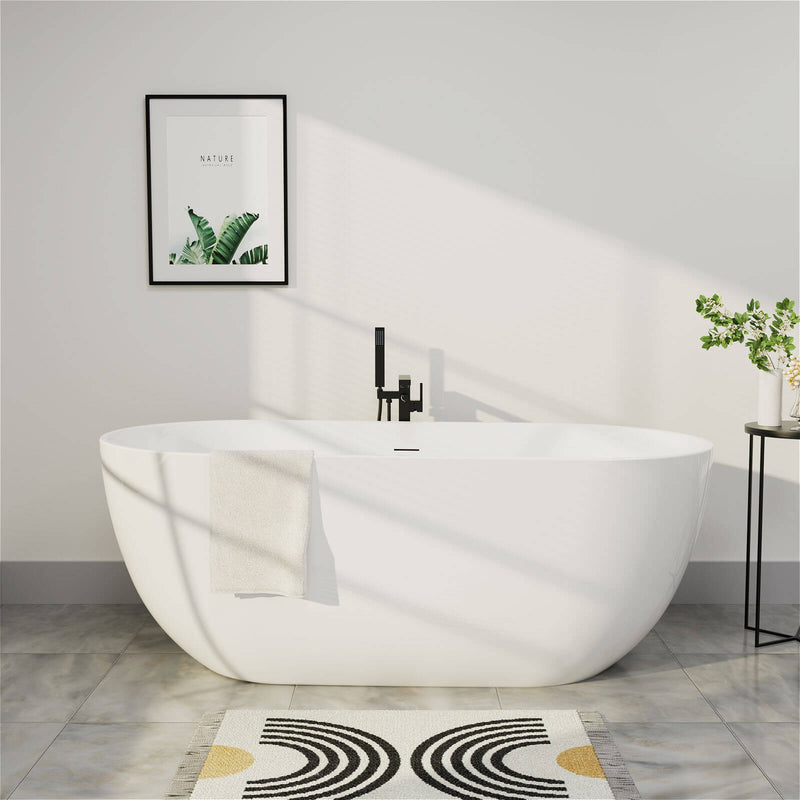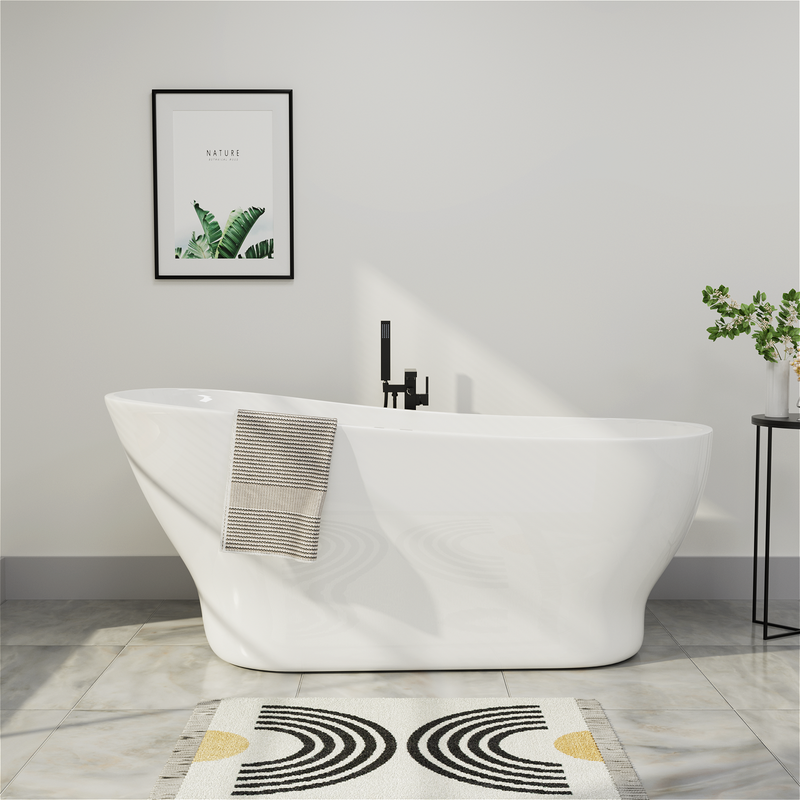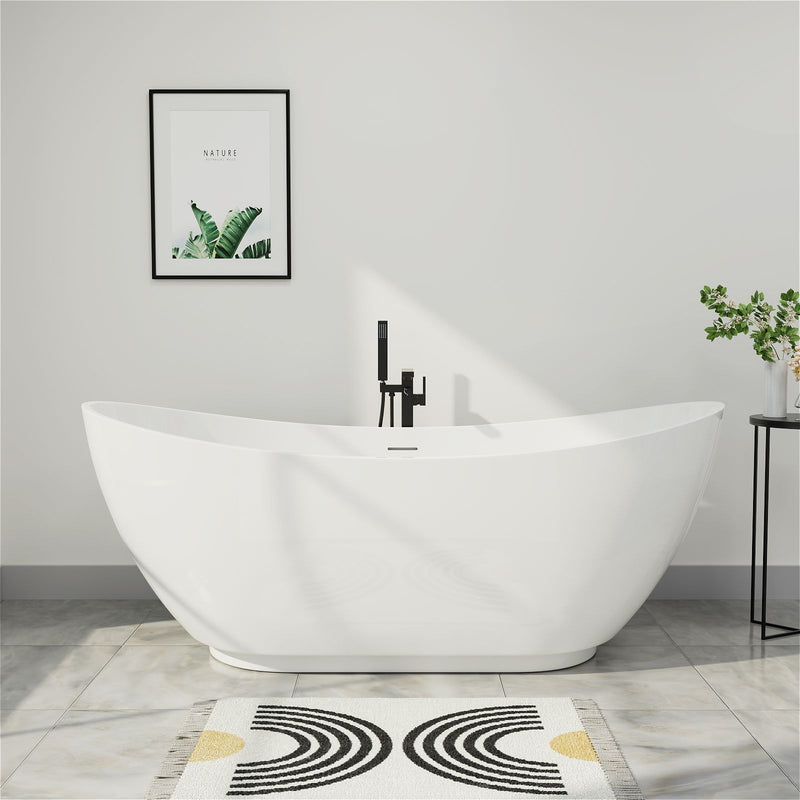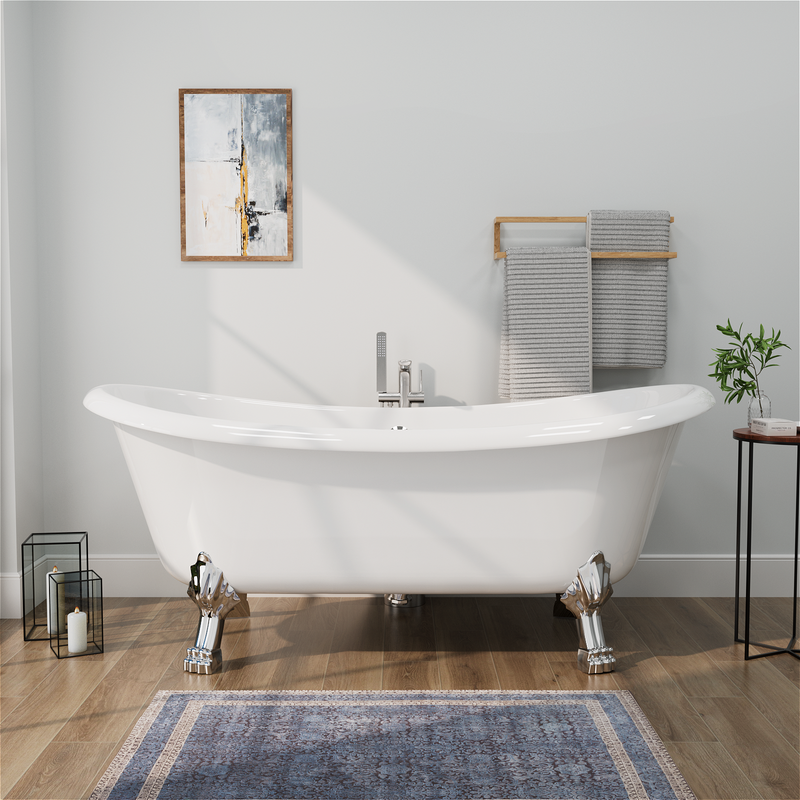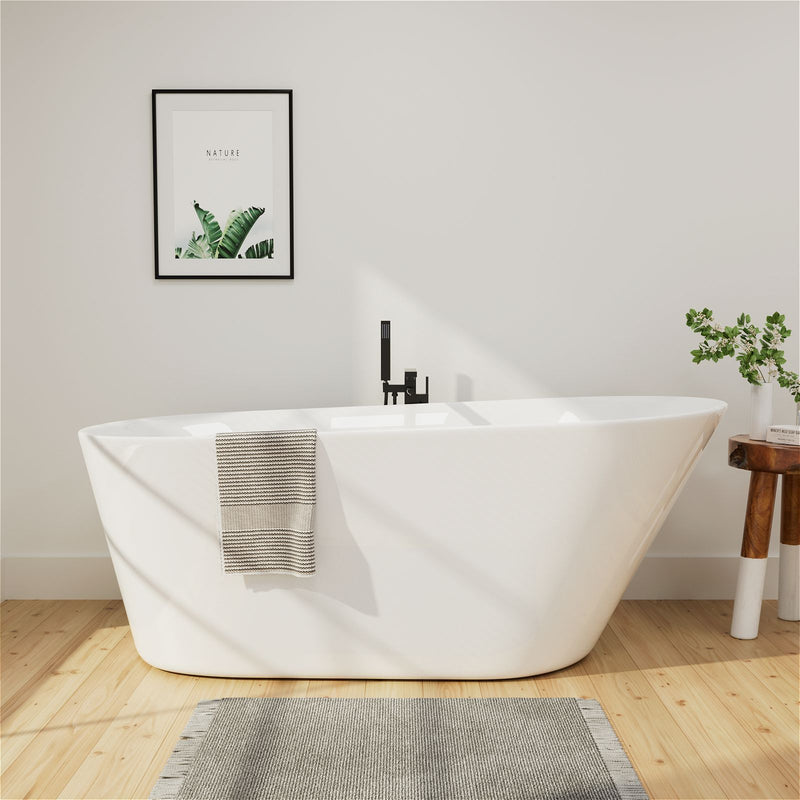When designing or selecting a bathtub, most homeowners focus on length and width while giving little thought to what may be the most crucial dimension - soaking depth. This oversight leads to countless disappointing bathing experiences where the water barely covers the shoulders or, conversely, creates dangerous overflow situations. The science of bathtub soaking depth involves ergonomic calculations, hydrotherapy principles, and practical safety considerations that together determine whether your bath will be a daily pleasure or constant frustration.
What Is Soaking Depth?
Soaking depth refers to how much of your body is submerged in water when you lie in a bathtub. It directly affects your bathing comfort - if the water is too shallow, you may not fully relax your muscles; if it's too deep, it might feel unsafe or waste water. Therefore, choosing the right soaking depth is key to the perfect bathing experience.

An ideal soaking depth should allow your shoulders and most of your body to be submerged without causing the water to overflow easily. Different bathtub designs, shapes, and purposes influence soaking depth, so understanding this concept is essential when selecting a bathtub.
How to Measure Soaking Depth?
Measuring a bathtub's soaking depth isn't complicated, but there are a few key points to consider:
Static Soaking Depth
• This refers to the vertical height from the bottom of the tub to the overflow drain when the tub is empty.
• Typically, standard bathtubs have a static soaking depth of 14-20 inches, while deep-soaking tubs can reach 24 inches or more.
Actual Soaking Depth
• When you enter the tub, the water level rises due to displacement (buoyancy principle). Thus, the actual soaking depth is slightly less than the static depth.
• Formula:
Actual Soaking Depth ≈ Static Depth – (Body Displacement Volume / Tub Base Area)
(For example, an average adult displaces about 1.3-2.6 gallons, depending on body size.)
Measuring Methods
• Use a Tape Measure: Measure vertically from the inside bottom of the tub to the overflow drain.
• Water Fill Test: Slowly fill the tub until it nears overflow and record the water height.
• Human Test (Most Accurate): Enter the tub, then fill with water to observe a comfortable level.
How to Choose the Right Soaking Depth
Choosing the ideal soaking depth and tub type requires balancing practical and personal factors. Here's a quick guide to help you decide:

Bathroom Size and Layout
Measure your space accurately, including headroom (3-6 inches for a freestanding tub, 6+ inches for a built-in tub). For smaller bathrooms, consider compact or Japanese-style tubs, which are deeper and take up less floor space. Larger bathrooms can accommodate deeper built-in tubs.
Bather Height and Size
Tall people (5'9'' and up): Choose a deep soaking tub that's 20+ inches deep so you can fully submerge yourself in the water.
Medium height (5'3'' – 5'9''): 16-20 inches (standard tub) is usually adequate.
Children or petite adults: 14-16 inches (shallow tub) is safer.
Water Use
A deep bathtub (24 inches) may require 40-53 gallons (about 18-23 liters) of water, while a standard bathtub requires 21-32 gallons (about 6-9 liters).
If you want to conserve water or have a limited supply of hot water, choose a medium depth.
Purpose of Bathing
Decide whether you want a quick rinse (standard bathtub, 12-17 inches deep) or a long, relaxing soak (soaking tub, 20+ inches deep). If you want therapy, consider a bathtub with jets or a whirlpool.
Accessibility and Family Needs
Walk-in tubs are suitable for people with limited mobility.
A bathtub that is too deep may be difficult to enter, and can be equipped with a step stool to facilitate entry and exit.
If combined with a shower, a shallow bathtub depth (about 20 inches) is recommended for safety reasons.
For children or elderly people, choose a non-slip base and grab bars, and avoid a bathtub that is too deep.
Plumbing and Construction
Make sure your water heater can fill a deep bathtub with enough hot water. Make sure the floor can support the weight of the tub - if your tub is deep or oversized, consult a professional.
Soaking Depth by Bathtub Type
Different bathtub designs affect soaking depth. Below is a comparison of common types:
| Bathtub Type | Average Soaking Depth | Best For | Features |
| Standard Rectangular Tub | 14-18 inches | General household use | Affordable, but average soaking |
| Deep-Soaking Tub | 20-28 inches | Those who enjoy full-body immersion | High water level, great for relaxation but uses more water |
| Walk-In Tub | 10-14 inches | Elderly or mobility-limited users | Safe, easy entry/exit |
| Freestanding Tub | 16-24 inches | Users seeking style + comfort | Elegant but requires more space |
| Whirlpool Tub | 16-22 inches | Those who want hydrotherapy | Includes jets, moderate depth |
| Japanese Ofuro Tub | 24-32 inches | Hot bath enthusiasts | Very deep, designed for seated soaking |

Deep-Soaking Tub
Typically 20-28 inches deep, allowing water to fully cover the shoulders for a spa-like experience.
Best for long soaks but uses more water and may be harder to enter/exit.
Standard Bathtub
14-18 inches deep, suitable for daily use but may not fully submerge the body.
Pros: Saves water, easy to clean; good for small bathrooms.
Walk-In Tub
Shallow (10-14 inches) with a built-in seat, ideal for seniors or those with mobility issues.
Often includes non-slip flooring and a door for safety.
Freestanding Tub
Depth varies (16-24 inches), depending on style (e.g., clawfoot tubs may be deeper).
Stylish but requires ample bathroom space.
FAQs
Is a deeper bathtub always better?
Not necessarily. Deep tubs (24+ inches) are great for full immersion but use more water and may be harder to enter. 16-20 inches is sufficient for most households.
How to prevent overflow while bathing?
Don't fill past the overflow drain.
Drain a little water before entering (since your body will raise the level).
Can a small bathroom fit a deep-soaking tub?
Yes! Choose a short-but-deep model (e.g., 4 ft long × 24 in deep) or a corner deep-soaking tub.
Does depth affect cleaning?
Yes, deeper tubs are harder to scrub. Opt for stain-resistant glaze or self-cleaning coatings.
Do whirlpool tubs need a specific depth?
Not always, but 16-22 inches ensures jets work effectively while keeping you comfortable.
Conclusion
The quest for perfect soaking depth represents more than luxury - it's about achieving hydrotherapy's full benefits while respecting water conservation and safety. As manufacturers break traditional depth barriers through material science and smart design, consumers gain access to profoundly better bathing experiences. The data proves what bathers instinctively know: true relaxation begins when the water properly rises to meet your shoulders, and that magic moment only happens with thoughtful depth engineering.

